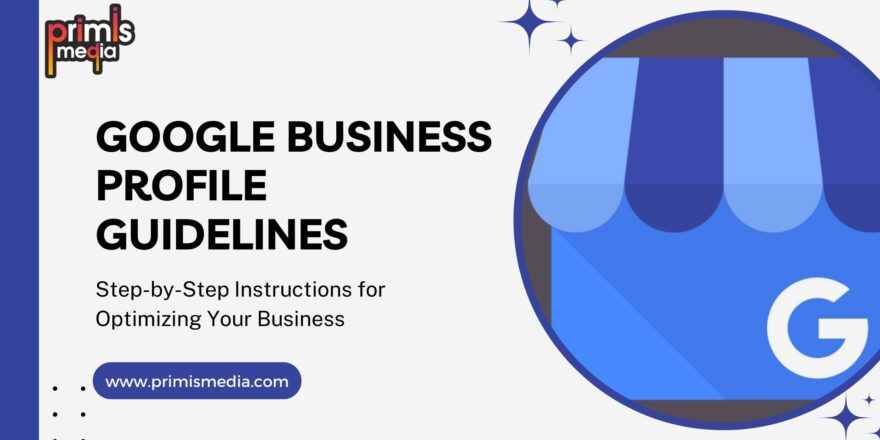The rise of voice technology has revolutionized the way we interact with our devices. From smartphones to smart speakers, consumers are increasingly using their voices to search for information, make purchases, and interact with brands.
As a result, optimizing your website for voice search has become a crucial component of a successful digital marketing strategy. But what does it take to make your website voice-friendly?
In this article, we’ll explore some top tips for optimizing your website for voice search and boosting your SEO.
We’ll cover everything from understanding how voice search differs from traditional search to optimizing your content for natural language queries.
By the end of this article, you’ll have a comprehensive understanding of how to future-proof your website for the voice-first era.
So, let’s get started!
Why optimizing for voice search is important for SEO


Voice search has emerged as a game-changer in the world of SEO. With the growing popularity of smart speakers and voice assistants, more and more people are using their voices to search for products and services rather than typing out queries on their keyboards. According to a study by Comscore, by 2020, 50% of all searches will be voice searches. This means that businesses need to optimize their websites for voice search to stay ahead of the curve and reach their target audience effectively.
In addition to being a trend, voice search is also a significant driver for local SEO. Voice search queries are often location-based, and they tend to return results that match the user’s geographic location. This means that if you’re a local business, optimizing your website for voice search can help you rank higher in local search results and attract more customers to your store.
Furthermore, voice search has a higher conversion rate than traditional search. According to a study by Google, 27% of people who use voice search to find local businesses then proceed to visit the business’s website, while 19% call the business. This means that optimizing your website for voice search can help you generate more leads, increase conversions, and ultimately, grow your business.
How voice search is changing search engine results pages


Voice search is changing the way search engines display results. Unlike traditional search, where users are presented with a list of links, voice search often returns a single answer, known as the featured snippet.
The featured snippet is the result that appears at the top of the search engine results page (SERP), often in a box with a summary of the answer to the user’s query.
To optimize your website for voice search, you need to understand how featured snippets work. Featured snippets are displayed when a search engine determines that a particular piece of content provides the best answer to a user’s query.
To increase your chances of appearing in a featured snippet, you need to provide clear, concise answers to common voice search queries.
Another way that voice search is changing SERPs is through the use of schema markup. Schema markup is a type of structured data that provides search engines with additional information about the content on your website.
By adding schema markup to your website, you can help search engines better understand your content and increase your chances of appearing in a featured snippet.
Understanding user intent in voice search queries
One of the key differences between voice search and traditional search is the way users phrase their queries. When typing out a query, users tend to use short, concise phrases. However, when using voice search, users tend to use natural language queries that are longer and more conversational.
To optimize your website for voice search, you need to understand the intent behind these natural language queries.
For example, if a user asks, “What’s the best Italian restaurant near me?”, the intent behind the query is to find a nearby restaurant that serves Italian cuisine. By understanding this intent, you can create content that answers the user’s query and provides them with a helpful and relevant answer.
To understand user intent in voice search queries, you can use tools like the Answer the Public and Google’s People Also Ask feature.
These tools provide insights into the types of questions users are asking and the intent behind their queries. By using this information to create content, you can optimize your website for voice search and improve your chances of appearing in a featured snippet.
Creating content that answers voice search queries


To optimize your website for voice search, you need to create content that answers the types of queries users are asking. This means focusing on long-tail keywords and natural language queries that match the way users are phrasing their questions.
When creating content for voice search, it’s important to keep your answers concise and to the point. Featured snippets often display only a small amount of text, so you need to provide a clear and concise answer to the user’s query. Additionally, you should use headers and bullet points to break up your content and make it easier for users to read.
Another way to create content that answers voice search queries is to use FAQ pages. FAQ pages are a great way to address common questions and provide users with helpful answers. By optimizing your FAQ page for voice search, you can increase your chances of appearing in a featured snippet and drive more traffic to your website.
Structuring your website for voice search


Structuring your website for voice search means making it easy for search engines to crawl and index your content. This means optimizing your website’s architecture, navigation, and internal linking structure to make it easier for search engines to find and understand your content.
To structure your website for voice search, you should start by creating a clear and concise navigation menu. This menu should be easy to understand and should make it easy for users to find the information they’re looking for.
Additionally, you should use internal linking to connect related content and make it easier for search engines to crawl your website.
Another way to structure your website for voice search is to use structured data markup. Structured data markup provides search engines with additional information about your content, such as the type of content it is, the author, and the date it was published. By using structured data markup, you can make it easier for search engines to understand your content and increase your chances of appearing in a featured snippet.
Technical tips for optimizing your website for voice search
Optimizing your website for voice search requires more than just creating great content. You also need to optimize your website’s technical performance to ensure that it loads quickly and is easy for search engines to crawl and index.
One of the most important technical factors to consider when optimizing your website for voice search is site speed. Voice search queries are often made on the go, which means users expect quick and easy access to the information they’re looking for. To improve your site speed, you can compress images, minify your code, and use a content delivery network (CDN) to cache your content and serve it more quickly.
Another technical factor to consider is mobile-friendliness. With the rise of voice search, more and more users are accessing websites on their mobile devices. To ensure that your website is mobile-friendly, you should use a responsive design that adjusts to different screen sizes and optimize your content for mobile users.
Optimizing your local SEO for voice search


As mentioned earlier, voice search is a significant driver for local SEO. This means that if you’re a local business, optimizing your website for voice search can help you rank higher in local search results and attract more customers to your store.
To optimize your local SEO for voice search, you should focus on creating content that is relevant to your local area. This means using location-based keywords and creating content that addresses the needs and concerns of your local audience. Additionally, you should claim your Google My Business listing and ensure that your business information is up-to-date and accurate.
Another way to optimize your local SEO for voice search is to focus on getting reviews. Reviews are an important ranking factor for local SEO, and they can help you attract more customers to your store. Encourage your customers to leave reviews on Google, Yelp, and other review sites, and make sure to respond to any negative reviews professionally and helpfully.
The impact of voice search on eCommerce


Voice search is also having a significant impact on eCommerce. With more and more users using their voices to search for products and make purchases, eCommerce businesses need to optimize their websites for voice search to stay competitive.
To optimize your eCommerce website for voice search, you should focus on creating product descriptions that answer the types of queries users are asking. For example, if a user asks, “What are the dimensions of this product?”, your product description should include this information clearly and concisely.
Additionally, you should optimize your website’s checkout process for voice search. This means making it easy for users to add products to their cart, enter their shipping and billing information, and complete their purchase using their voice.
Voice search analytics and measuring success
To measure the success of your voice search optimization efforts, you need to track your website’s performance using analytics tools. Google Analytics is a great tool for tracking your website’s traffic, user behaviour, and conversion rates.
To track your website’s performance for voice search, you should focus on metrics like click-through rate (CTR) and bounce rate. If your website is appearing in featured snippets, you should see an increase in CTR and a decrease in bounce rate.
Another way to measure the success of your voice search optimization efforts is to track your website’s rankings for voice search queries. This can be done using tools like SEMrush and Ahrefs, which provide insights into the types of queries your website is ranking for and the position of your website in the search results.
Conclusion and future predictions for voice search
In conclusion, optimizing your website for voice search is essential if you want to stay ahead of the curve and reach your target audience effectively. By understanding how voice search differs from traditional search and following the tips outlined in this article, you can future-proof your website for the voice-first era and improve your chances of appearing in a featured snippet.
Looking to the future, voice search is only going to become more important for businesses of all sizes. As voice assistants become more sophisticated and more users adopt voice search technology, optimizing your website for voice search will become a crucial component of any digital marketing strategy.
So, start optimizing your website for voice search today and stay ahead of the curve!





